Words Justin Croft Photographs Christopher Sykes and Derry Moore (courtesy of Clearview Books), Justin Croft
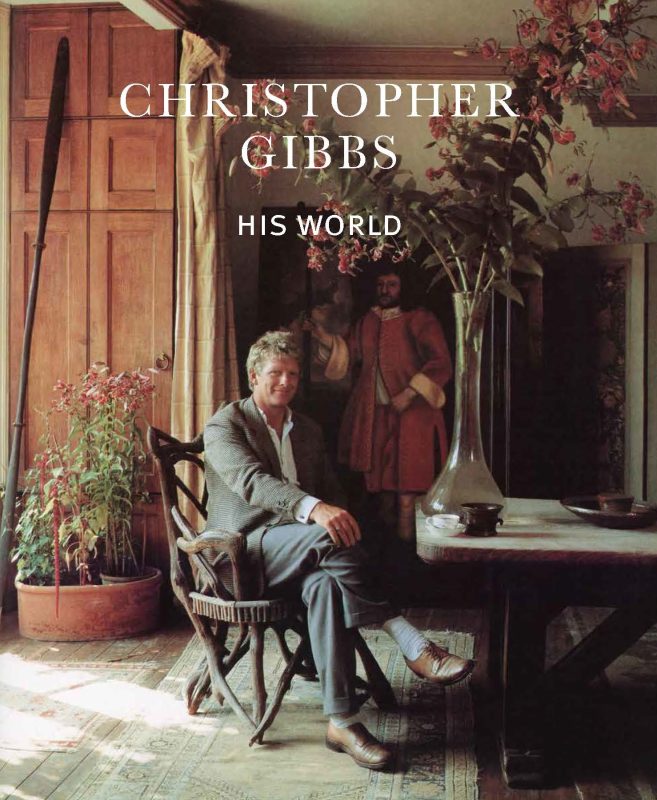
Christopher Gibbs: His World, cover portrait by Christopher Sykes
The book is a welcome arrival, gathering many of Christopher Gibbs’s essays, articles and letters, drawn together and ably edited by Lucy Moore. Scholarly as he could be, Gibbs preferred to write short pieces for magazines like Vogue and The World of Interiors so his prose is concise (if tending towards the floral), readable, sometimes funny, occasionally waspish and always enthusiastic.
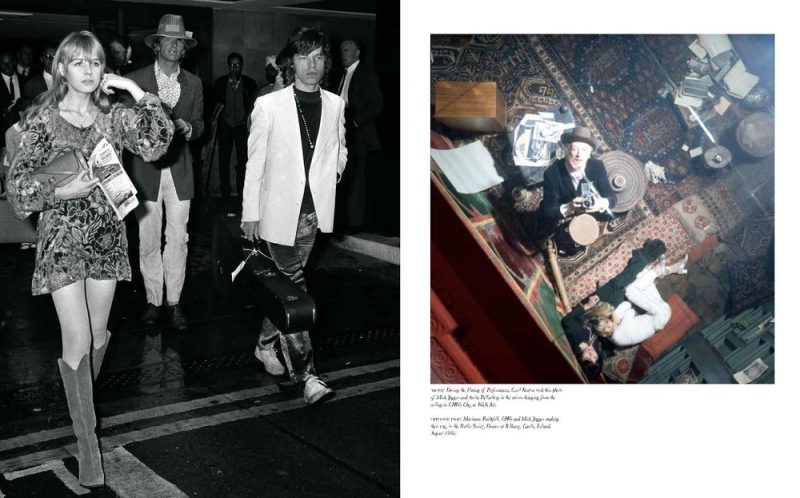
Marianne Faithfull, Christopher Gibbs, Mick Jagger and Cecil Beaton (right hand image by Cecil Beaton).
It’s fair to say that Gibbs was a dandy. He steered an elegant course through London in the 1960s and 70s, befriending Mick Jagger, Cecil Beaton, William Burroughs and Bruce Chatwin, and he became a successful and highly respected antiques dealer. Despite the late nights, louche parties and jaunts to Tangier, Gibbs had a quiet and private side and craved peaceful surroundings as much as he relished society. It was this that led him to Davington Priory in 1972 having seen an advertisement for its sale by the Church of England. He later wrote:
‘I took the train to Faversham, an unfamiliar line, as the base and brickish skirt gave way to wood and farm and, across the Medway, to oast and orchard. I walked from the station down the street to the pillared market house, then left, downhill, until ramshackle old houses gave way to a wide and reedy pond, and then up the tree-crowned hill past allotments bright with pear blossom, round the old flint wall and its stepped stone gateway, past the churchyard, to where tall limes and a great ilex shaded the entrance to Davington Priory’.
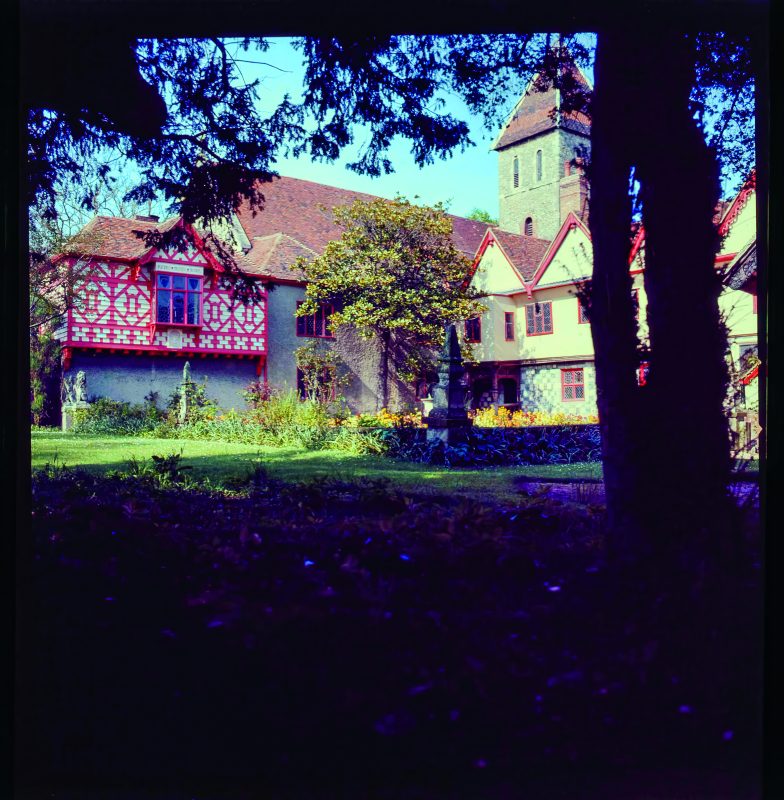
Davington Priory, photograph by Derry Moore
It’s a whimsical account of a first encounter but still works perfectly as a description of the walk from through town from station to priory.
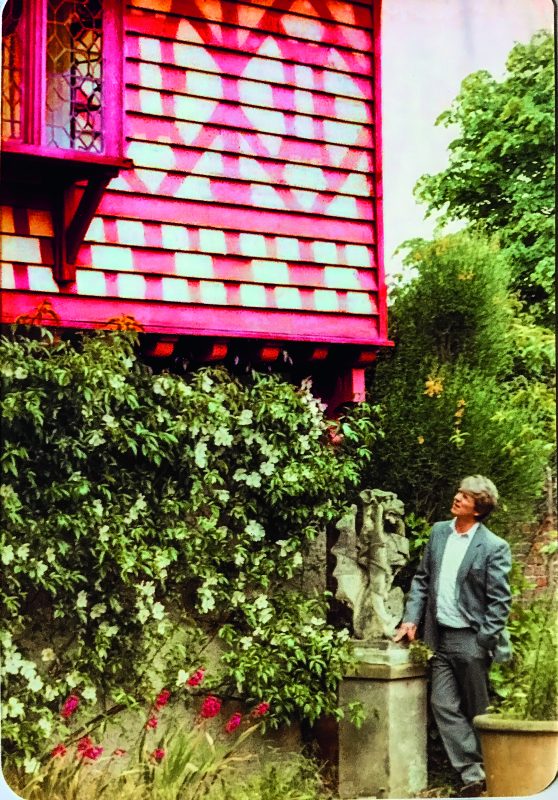
Christopher Gibbs at Davington Priory, photograph by Derry Moore
Gibbs took it upon himself to bring the medieval priory he bought back to life, restoring not just its ancient features but respecting the renovations of another former owner Thomas Willement, who had reimagined it in the Victorian era, bringing stained glass and polychrome paint to what he had found as a near-ruin. The results of Gibbs’s ten-year custodianship are superbly captured in a sequence of photographs by Derry Moore, reproduced at large scale in the book.
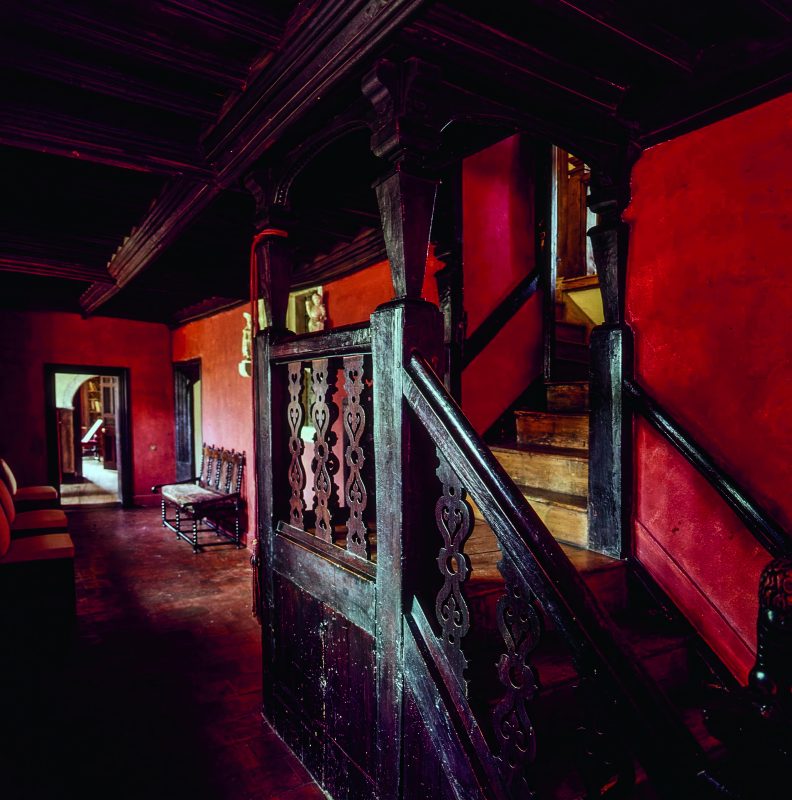
Davington Priory interior, as restored by Christopher Gibbs. Photograph by Derry Moore
Gibbs recalls befriending the gardener Ken Judges, who had handed over the keys to the house clocks in a symbolic welcome. Many of us remember Ken fondly from his years as Bob Geldof’s gardener at Davington and from his last years as a resident of the almshouses. Others will have known Mr Wagland, engaged as a cook at Davington, but who followed Gibbs in 1982 to his next house at Clifton Hampden near Abingdon (until he moved on again in 2000). In that year he gave Mrs Wagland a party in honour of her 25 years as his housekeeper and her 90th birthday. ‘She died two days later, which was very elegant,’ wrote Gibbs. I treasure a copy of a book by Faversham’s Jane Elizabeth Giraud he gave Mrs Wagland in their last year at Davington.
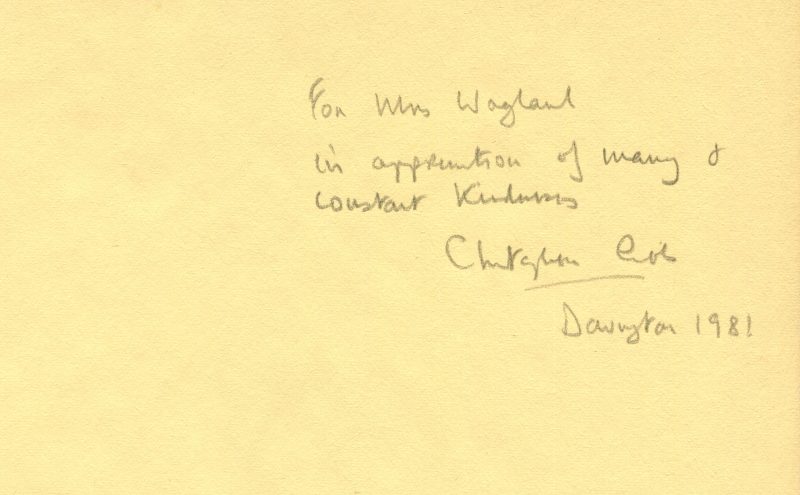
‘In appreciation of many & constant kindnesses’. Book inscription from Christopher Gibbs to Mrs Wayland, Davington 1981 (my own collection).
Alongside his antique dealing, Christopher Gibbs was always in demand as an interiors specialist, advising on major projects at Chilham Castle, Paul Getty’s Chiltern mansion at Wormsley and at Houghton Hall in Norfolk, to say nothing of his final projects in Tangier. The various notes and letters transcribed in the book reveal the extent to which he was trusted with precious heirlooms and with major historic buildings — he was notably the first antique dealer to formally advise the National Trust, for example, an engagement some may have regarded as a case of poacher turned gamekeeper, but which set a template for many creative partnerships between the trade and heritage bodies.
Neither biography nor autobiography in a formal sense, Christopher Gibbs: His World is an unusual book, being almost entirely composed of the subject’s own words, interspersed with the editor’s commentary and picture captions together with a few snippets from friends and colleagues. It means Gibbs remains, for better or worse, in charge. (Though he toyed with the idea of writing his own book or a memoir, it never got beyond a few early chapters, and the impression is that he was too busy or having too much fun to write more than his many published articles).
Lucy Moore has knitted these extracts together skilfully to create a narrative, with the lightest of editorial touches. But inevitably there are gaps. I found myself wanting to know more about Gibbs and Peter Hinwood, his partner in business and in life (‘my old mate, Pete’). A charismatic film actor (notably as the lead in the Rocky Horror Picture Show) Hinwood shared a love of Morocco, and his 1976 portrait by Nicolette Meers is a powerful presence in several of the book’s photos, hung prominently in successive homes. For all the appearances of a rich and colourful shared life, Gibbs remained private in this respect, an attitude largely shared in this book, which is authorised by the Gibbs family. I was also intrigued to know more about what made the Christopher Gibbs business tick. It clearly worked spectacularly well, attracting A-list clients and allowing auction purchases at a high level — with plenty left over for feathering a series of nests over many years. Gibbs the stylist and impresario is excellent (and sincere) in his exhortations to buy antiques bravely, without following trends, and according to one’s own eye and taste, but dealing is a tough business. Any dealer has tales of thrills and spills, of waking in the night haunted by phantoms of disastrous purchases, of less-than-honest would-be suppliers and of anxious bank managers. Success depends on navigating such treacherous waters, not just a good eye, and despite appearances of floating several feet above these demons, Gibbs would not have been immune.
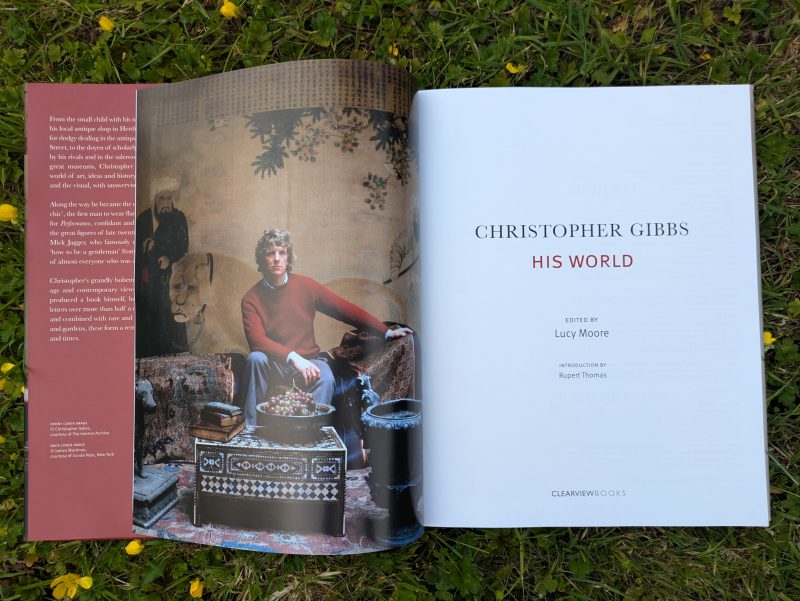
But these would make a different study. As it is, Christopher Gibbs: his World is a joyous book. It’s one to read backwards and forwards, led by the superb photography (stellar picture credits include Robert Mapplethorpe, Cecil Beaton, Lord Snowdon, Michael Cooper, Derry Moore, Christopher Sykes and Jonathan Pilkington among many delightful family photographs) coupled with Gibbs’s infectious enthusiasm and manifest love for his work. In his own words:
‘Remember that right now you are in Paradise. The sense of enchantment can be awakened in each of us. It is our duty and joy to share it’.
Christopher Gibbs: His World. Edited by Lucy Moore with a forward by Rupert Thomas.
Text: Justin Croft. Photographs: Christopher Sykes and Derry Moore (courtesy of Clearview Books), Justin Croft
Clearview Books, May 2025 £50
Available from Tales on Market Street, Faversham and to order from good independent bookshops.